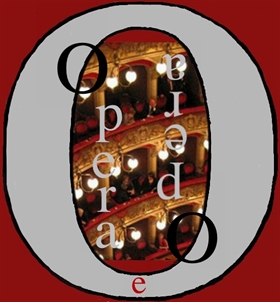by Natalia Di Bartolo – Then stage at the Teatro Massimo Bellini in Catania, in a historical staging, sets and costumes by Franco Zeffirelli.
Daughter of the Regiment, Opera-comique in two acts by Gaetano Donizetti, is one of the "French" works of the Bergamo genius, since it was composed in Paris and debuted at’Comical opera of the French capital l’February 11, 1840, conducted by the composer, on libretto by Jean-François Bayard and Jules-Henri Vernoy de Saint-Georges. And’ equally known as “The Daughter of the Regiment”, because on 3 October 1840 he made his debut at the Teatro alla Scala in Milan in the translation by Callisto Bassi, directed by Eugenio Cavallini.
Donizetti's opera, in its original French version, is gone on stage on 20 October 2023 at the Teatro Massimo Bellini in Catania, in a historical setup, sets and costumes of Franco Zeffirelli, created for Massimo Theater of Palermo in 1959 and which has not ceased to fascinate the viewer since then.

A name, a guarantee, first of all, precisely because in staging this work, seasoned and interspersed with many dialogues, the key point is to capture its spirit.
Zeffirelli, inspired by the military prints created by Épinal in the Napoleonic era, he “imagined” it as a sort of naive fairy tale (after all, this is precisely what it is about) and gave it the connotations of certain books that were in fashion many years ago, in which, when leafing through the pages, imaginative silhouettes of woods, of castles, of garrisons of soldiers emerged, in the very colorful fragility of an imaginative cut out paper.
Likewise, to the scenography of this production is as if cut out of the most colorful paper and, at the same time, is an adequate harbinger of the imaginative reality that it is intended to represent, where even the cardboard flags flutter while still. Obviously, equally imaginative characters move in this context, dressed in colorful costumes, taken from Anna Biagiotti.
The interpretation expressed in Zeffirelli's production system is not only a graceful and famous setting, but fully captures the spirit of Donizetti's work.

Daughter of the Regiment, in fact, it is a work between the romantic and the popular, which lives in the imagination, which does not touch the ground either in the events or in the characters, very fragile, also and above all, in its structure as a French opera interspersed with dialogues. Like storybook paper, Fille is delicate, a little’ bizarre; it must be treated with care and moderation, otherwise you run the risk of tearing the beautiful colored pages.
A very difficult undertaking, in truth, also because the score contains gods true musical jewels, which must be treated properly, both by those who conduct and by those who sing.
The Concertmaster and conductor Giuliano Carella he conducted, starting from the symphony and the subsequent choral part at the opening of the curtain, with orchestral enthusiasm and sonority that at times exceeded in enthusiasm. An overall "lighter" baton would certainly have benefited the entire performance, which was discontinuous in its dynamics and agogic progression and at times overwhelming the voices; except on the choir, conducted by Luigi Petrozziello, which gave rise to a strong, constant whole, very martial but not always appropriate.
The Marie by Jessica Nuccio proved to be correct, but without particular vocal or interpretative impulses, where the characterization of the characters is really important to make them emerge from the colored paper pages of the aforementioned book.

John Osborn, was a Tonio capable of mastering the famous “Ah, my friends, what a day of celebration!”, with the following cabaletta “For my soul”, of which he even granted an encore: the famous aria “of the nine chest Cs”, as the recapitulation includes four double dots on C4 followed by a crowned note in the final cadence, therefore eight high Cs (plus a ninth in the cadence). In nineteenth-century performance practice they were performed in falsetto but, consecrating many opera stars of the past and present, today it is performed in full voice. The willing Osborn, however, has appeared a little’ "tarnished" vocally, so much so that, thanks to this encore, rarely granted by tenors, he is forgiven for some defaillances in the second act. To his credit, he also has excellent French pronunciation.
Luca Galli-Sulpice, Madelyn Renée-Marchesa in Berkenfield (the best French pronunciation on stage), Francesco Palmieri-Hortensius and performer Ernesto Tomasini- Duchess of Krakenthorp, en travesti according to the nineteenth-century tradition that anticipated Operetta, completed the cast.

The directed by Marco Gandini it was respectful of the illustrious precedent and Antonio Alario's dazzling lights enhanced the fairy-tale colors of the whole.
Heterogeneous audience, for a premiere in Catania, in truth; rich presence of French-speaking tourists, overall satisfaction with the evening, with numerous and participating spectators.
Natalia Dantas ©
PHOTO by Giacomo Orlando ©

